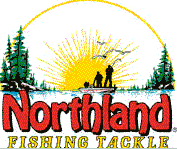



















|
Tough Fishing? Head for the Woods (Lake of the Woods)
By Perry Good
The key to finding Lake of the Woods walleyes is to locate one of the
many various sized reefs, or mid-lake humps. Many reefs are not even
marked on the map, but can still be found by using my  7520. They all seem to attract walleyes, with the larger reefs attracting
the
7520. They all seem to attract walleyes, with the larger reefs attracting
the
most walleyes. Mobility while fishing various reefs allows you
to catch the active walleyes in similar structure. Walleyes are a structure-oriented
fish, most of the time. These walleyes will be tight to the bottom,
lying in the holes between rock and cuts in the bottom. They may
be feeding, or waiting in ambush to find an easy meal that comes their
way. When fishing structure, you have to be able to stay tight to
the structure or your lure presentation will not be in the strike zone
of the fish. Move just a boat length away and you will be out of
luck. Fishing the shallows with diving  Shad Raps or casting Risto Raps rocky points and humps can be very effective.
Don't overlook slipbobber fishing shallow rocky spots with livebait. If
the slip bobber is part of your live bait delivery system and you will
need to make adjustments if you want your bait to be presented to the fish
in a "natural manner." To use your slip bobber properly you will
first have to determine depth. If the slip bobber lies on it's
side then I readjust the (float) bobber so that it rides off the particular
structure from 1 ft. to 6 inches. If you use this slip bobber
method, it will enable you to jig your bait vertically without positioning
yourself over the top of the structure. With little or no wind you'll
have action on the bobber. This can easily be achieved by sweeping
the rod about a foot at a time. It might seem simple, and it
is, but the results will astound you. When the walleye inhales your bait
and your bobber slides slowly underwater, remember the following tips:
Take all the slack out of your line without putting pressure on the fish.
When you're ready to feel the fish reel as quickly as possible putting
pressure on the fish. At the same time "set the hook", lift the rod
tip towards the sky and this will penetrate to bony roof of the walleyes
mouth. If possible, stick to the round head
Shad Raps or casting Risto Raps rocky points and humps can be very effective.
Don't overlook slipbobber fishing shallow rocky spots with livebait. If
the slip bobber is part of your live bait delivery system and you will
need to make adjustments if you want your bait to be presented to the fish
in a "natural manner." To use your slip bobber properly you will
first have to determine depth. If the slip bobber lies on it's
side then I readjust the (float) bobber so that it rides off the particular
structure from 1 ft. to 6 inches. If you use this slip bobber
method, it will enable you to jig your bait vertically without positioning
yourself over the top of the structure. With little or no wind you'll
have action on the bobber. This can easily be achieved by sweeping
the rod about a foot at a time. It might seem simple, and it
is, but the results will astound you. When the walleye inhales your bait
and your bobber slides slowly underwater, remember the following tips:
Take all the slack out of your line without putting pressure on the fish.
When you're ready to feel the fish reel as quickly as possible putting
pressure on the fish. At the same time "set the hook", lift the rod
tip towards the sky and this will penetrate to bony roof of the walleyes
mouth. If possible, stick to the round head  Fireball jigs in the 1/16 or 1/8-ounce size. They are far more snag
resistant than heavier 1/4-ounce jigs and work better in rocks. Swim,
slide, or crawl your jig across
Fireball jigs in the 1/16 or 1/8-ounce size. They are far more snag
resistant than heavier 1/4-ounce jigs and work better in rocks. Swim,
slide, or crawl your jig across
the rocks or give it a few quick hops. Try letting it sit if
the snags aren’t too bad. It always pays to experiment with retrieves.
The flash and vibration of crankbaits makes them natural for these
conditions. The fish can sense them a long way off and be ready
to strike as they approach. All in all, they are far more effective
on walleyes than most people realize.The crankbait that I prefer to use
on weeds and walleyes is the  Husky Jerk. It is long and has a slow wobble. The color is
flashy and catches the eye of the walleyes and if you let it sit over the
top of
Husky Jerk. It is long and has a slow wobble. The color is
flashy and catches the eye of the walleyes and if you let it sit over the
top of
the weeds and twitch it ever so slowly it will drive those walleyes
crazy. Where jig or rig eating snags are bad switch to a bottom bouncer
teamed with either a  Rainbow spinner or a livebait rig like a
Rainbow spinner or a livebait rig like a  Roach rig. For jigging or rigging, drift or troll your baits or lures
as vertically as
Roach rig. For jigging or rigging, drift or troll your baits or lures
as vertically as
possible, trying to hold them just off the bottom to minimize snagging
and loosing tackle

Walleyes Inc. website is maintained
by Randy
Tyler Fishing the In-Fisherman Professional Walleye Circuit, Masters
Walleye Circuit and the Team Walleye Circuit. All rights reserved.Copyright
1999/2000
Please visit these site sponsors
Daiichi/Tru-Turn Hooks,
Lindy
Little Joe,
R-A.M Mounting Systems,
Ranger
boats,
Mercury Marine, Bedford
Sales and Hamby's Beaching Bumpers,
Goldeneye Marine products, Panther
Marine Products
|

